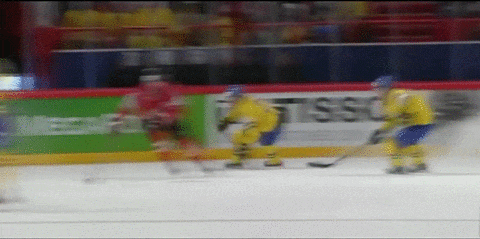Let’s Talk About Hockey And Your MCL

Hockey is one of the fastest sports on the planet due to the conditions created by the physics of the skate. It is an incredibly rough sport that requires focus, balance, grit and physical toughness. Obviously, the speed at which hockey is played, coupled with the physicality of the game, greatly increases the risk of injury.
The three main injuries in order of most common occurrence are: concussions, shoulder and knee injuries. We’re going to focus on the knee. Below is a video of a very common hockey play that is incredibly risky and can cause severe damage; the knee-on-knee collision:
 Here, we see Alex Edler of Team Sweden attempting to make body contact with Eric Staal of Team Canada. Chances are Edler had no intention of “greasing” Staal, but due to the speed of the game, it can sometimes be difficult to make a clean “hockey hit”. A clean hit would be shoulder-on-shoulder or a shoulder to the chest while avoiding a hit to the head (which commonly results in a concussion or concussion-like symptoms).
Here, we see Alex Edler of Team Sweden attempting to make body contact with Eric Staal of Team Canada. Chances are Edler had no intention of “greasing” Staal, but due to the speed of the game, it can sometimes be difficult to make a clean “hockey hit”. A clean hit would be shoulder-on-shoulder or a shoulder to the chest while avoiding a hit to the head (which commonly results in a concussion or concussion-like symptoms).
Certainly, you can tell Staal is in an incredible amount of pain. Luckily, he only suffered a minor MCL sprain (a grade 1 MCL tear). The Medial Cruciate Ligament is a thick band of tissue that connects the thigh bone to the shin bone and provides stability to the inside of the knee. It is the ligament which has the highest risk of injury while playing hockey, as a skating motion requires one to push off the inside of the skate blade.
 A Grade 1 MCL tear requires icing, anti-inflammatories and light physical therapy, which usually sees athletes return to pre-injury level of performance- anywhere from a few days to 2 weeks. Had Eric Staal been going faster, he could have easily suffered a partial tear (a grade 2 MCL tear) which would have required a brace to stabilize the knee and would have bumped his recovery time to 4-6 weeks. Had he suffered a grade 3 MCL tear, he would have required a brace and crutches bumping his recovery time to 2-4 months. Only in very rare cases, does an MCL injury require surgery.
A Grade 1 MCL tear requires icing, anti-inflammatories and light physical therapy, which usually sees athletes return to pre-injury level of performance- anywhere from a few days to 2 weeks. Had Eric Staal been going faster, he could have easily suffered a partial tear (a grade 2 MCL tear) which would have required a brace to stabilize the knee and would have bumped his recovery time to 4-6 weeks. Had he suffered a grade 3 MCL tear, he would have required a brace and crutches bumping his recovery time to 2-4 months. Only in very rare cases, does an MCL injury require surgery.
In many instances, any sort of MCL tear can cause instability in the knee and the surrounding ligaments. This instability can increase the risk of damage to other areas of the knees, calves and hips so it is very important to ensure rehabilitation is not rushed.
Some other injuries that can indirectly cause instability in the knees are: broken femurs/tibias/kneecaps, tears in the hip flexor and lower back, injuries to other knee ligaments (e.g. ACL or PCL) as well as groin or abductor strains. These types of injuries can cause the knee joints to fall out of alignment and pull on the ligaments surrounding the knee, resulting in an imbalance with the way all of these joints, tendons and ligaments work together.
We’re all about getting people back to doing what they love; if you’ve suffered a knee injury, take all the time you need to get healthy before hitting the ice or you may find yourself getting re-injured or injuring something new.
